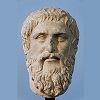6.6: Byzantine Apogee - The Macedonian Emperors
- Page ID
- 132308
The ninth and tenth centuries represented a time of recovery and expansion. The Macedonian Renaissance resulted in a growth of learning among both clergy and lay elites. This growth took place against the backdrop of military success by the emperors of the Macedonian Dynasty (867 – 1056). The first emperor of this dynasty, Basil I (r. 867 – 886), a soldier and servant of the emperor, had come from a peasant background. He seized control of the Empire when he murdered the reigning emperor and took the position for himself.
Basil was an effective emperor. To the east, as the Abbasid Caliphate broke down, he inflicted several defeats on the Arab emirs on the border, pushing the frontiers of the Empire further east. Although unsuccessful in fighting to maintain control of Sicily, he re-established Byzantine control over most of southern Italy.
Under the Macedonian emperors, the Eastern Orthodox culture of the Byzantines spread north beyond the borders of the Empire. In 864, the Bulgar khan, whose predecessors had been building a state of their own, converted to Christianity and was baptized. This conversion allowed the Bulgar state to be legitimated by the Church in the same manner as had the Byzantine Empire and the kingdoms of Western Europe.
.png?revision=1)
In the ninth century, Cyril and Methodius, missionaries from the city of Thessalonica, preached Orthodox Christianity to the Slavic peoples of Eastern Europe and devised the alphabet that we today call Cyrillic in order to write the Bible and liturgy in their own language, Slavonic. Along with Orthodox Christianity came the culture of the Byzantines.
Subsequent emperors maintained this record of successes. John Tzimisces (r. 969 – 976) established Byzantine control over most of Syria. Basil II (r. 976 – 1025) annexed the Bulgar state that had grown up in the lands south of the Danube and further subordinated the Armenian kingdoms. By the end of his reign, the Byzantine territory encompassed about a fourth of what had been the Roman Empire at its height under Augustus.
Basil II had further diplomatic triumphs. He allied with the princes of the Kievan Rus, a state that had grown up in Eastern Europe along the rivers between the Baltic Sea and the Black Sea. The Rus was a people group made up of a large Slavic population. The rulers were ethnically Norse, who had come from Scandinavia. In 988, Kievan Grand Prince Vladimir (r. 980 – 1015) was baptized into the Christian religion, and became a close ally of Basil II by marrying his sister, Anna. The elite culture of the Rus would come to reflect Greek, Slavic, Norse, and also Turkic elements. Allying with these people had brought Basil II to the height of the Byzantine state’s power.
.png?revision=1)
Despite its successes during the reign of the Macedonian emperors, the Byzantine state faced weaknesses. The theme system had gradually broken down. Increasingly, soldiers came from the ranks of professional mercenaries, including those made up of Norsemen. The soldiers of the themes received less training and served mainly as a militia that would back up the core of a professional army, known as the Tagmata. Whether this smaller tagmata would be up to the task of defending an empire the size of Byzantium would remain to be seen.
.png?revision=1)
Map \(\PageIndex{1}\): Map of the Byzantine Empire at the Death of Basil II in 1025 CE Author: User “Bigdaddy1204” Source: Wikimedia Commons License: CC BY-SA 3.0
.png?revision=1)


